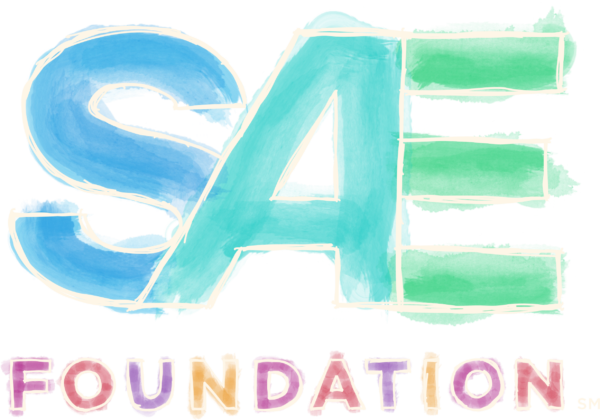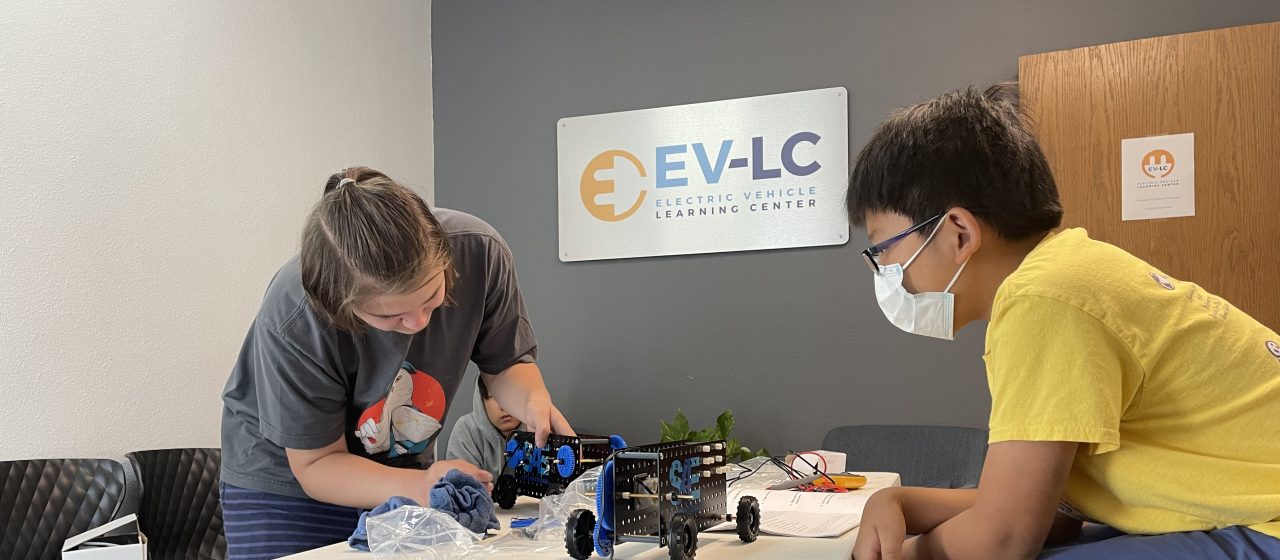Students Get Creative, Build Fully-Electric Toy Cars at STEM Camp
Creativity. When you ask most middle and high school students about engineering, that’s one word that usually doesn’t come to mind. That is unless you ask students from the Electric Vehicle Learning Center (EV-LC), a non-profit in San Marcos, California.
In partnership with the SAE Foundation with funding support from Qualcomm, students were tasked with designing and building a working electric car through the SAE A World In Motion® (AWIM®) Motorized Toy Car STEM challenge. That’s where the creativity really kicks in.
First, EV-LC instructor Ron Grosinger (known as Mr. G. by his students) modified the builds to be fully battery powered to reflect the same concepts and design principles in fully electric cars like a Tesla, Nissan Leaf, or Chevrolet Bolt.
Then, the students took over. They wanted to make their cars go faster. To convert them to four-wheel drive. With AWIM’s flexible curriculum and open platform, the students were able to configure gears in any way they wanted—and the students loved it! “Right away, the students started jumping ahead. We met once a week and when they came in the following week, the car was already four-wheel drive. They got super creative and figured it out on their own,” said Mr. G.
Even though the program was virtual due to restrictions around the pandemic, the students found ways to collaborate and, most importantly, to help each other out. When one student was struggling with the build, the other students were immediately there to lend a hand. Because they all had Motorized Toy Car kits at home, they were able to screen share and work through different solutions. Younger students were able to observe how the older students would use open-ended questions to help classmates figure out the problem on their own versus just telling them how to do it—a skill that will continue to be useful for years to come.
“Teaching class remotely is about community. If the students can see and help each other, that’s the community. They all had the same standardized STEM kit with the same parts. Through the builds, they could see what others were doing and work through their shared failures. Failure is how you learn,” he added.
Although many of the students in the program were familiar with electric vehicles because their parents or someone in their family owned one, most were unfamiliar with how they work—opening the door for real-world discussions about their Motorized Toy Car builds. Students would ask “What is a watt?” “How does a watt compare to horsepower?” “What is the difference between voltage and amps?” Questions they can directly refer to every time they ride in or see an electric vehicle or charging station.
By the end of the STEM camp, students couldn’t wait to come back and learn what they’d be working on next. As Mr. G. explains, “These experiences aren’t always about getting students to want to be engineers. It’s about lighting a fire. To give them a chance to win a competition using their brains. That’s what lights a creative fire and gets students to realize just how capable they are.”
When students think about creativity, it’s not just about the creative arts. It’s about finding creative solutions to problems. Through the EV-LC program’s AWIM STEM experience, students learned invaluable 21st-century power skills and that engineering can be really creative or as Mr. G. put it “Like being an artist using physics.” Well said, Mr. G.!
What’s next for EV-LC students working on the AWIM Motorized Toy Car? Coding an Arduino to control a milliwatt hour meter so they can narrow the project down to one variable—monitoring power-to-weight ratio or energy use over a predetermined distance. And according to Margarita Santos, executive director, EV-LC, that will mean even more chances to get creative. “Igniting the connection between EV technology and creativity to engage and inspire young minds is our mission.”

